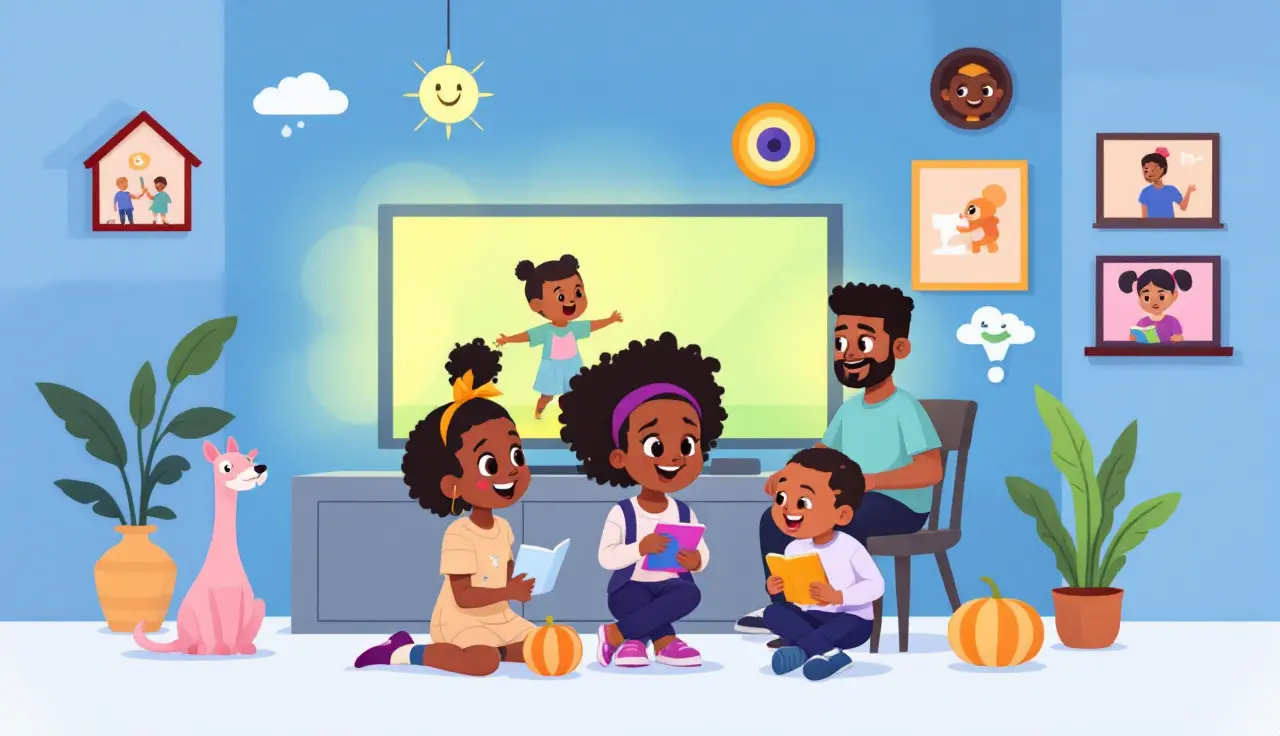By Lionel Kubwimana
••5 min read
Turn everyday screen time into a fun gateway for African language learning and cultural pride—simple tips, real stories, clear steps.

Picture this: A family in Minneapolis watches colorful cartoons together. But these aren't just any cartoons – they're in Kirundi, an African language. The kids are laughing, learning, and connecting with their heritage all at once.
This isn't rare. Families around the world are using African-language shows to help their children stay connected to their roots while having fun.
When kids watch shows in different languages, their brains get stronger. Scientists have found that bilingual children are better at switching between tasks and solving problems. It's like going to the gym, but for your mind.
African languages carry special wisdom too. Take the Yoruba word "Ìbà" – it's a respectful greeting for elders that doesn't translate well to English. When kids hear these words in cartoons, they learn values that regular translation can't teach.
Sadly, many African languages are disappearing. By 2100, about 30% might be gone forever. But cartoons can help keep them alive and make kids proud to speak them.
Finding good African-language cartoons takes some work, but it's worth it. Here's what to look for:
Play 30 seconds with subtitles on. If the spoken words match the text, the quality is probably good.
Good shows teach real greetings, songs, and traditions – not made-up "jungle" stories. Authentic details help kids build real pride in their heritage.
After watching two episodes, ask which character they like and why. If they're engaged, they're learning.
Here are some popular options:
Most are on YouTube, Netflix, or other streaming services.
Join online groups with other families doing the same thing. Share links, solve problems together, and celebrate successes.
In Nairobi, twelve families started a "Cartoon Café." Kids watch Swahili shows, then do science experiments and crafts based on what they saw. Attendance doubled in two months.
In Toronto, Ghanaian grandparents recorded voiceovers for Ga-language cartoons. Now bedtime stories help kids remember their heritage.
One study followed 150 children for six months. Those who watched African-language cartoons scored 25% higher on language tests and showed more cultural pride.
The key is being purposeful. Set a timer for 30-45 minutes of educational screen time. When it goes off, switch to offline activities.
Try a "Media Passport" – kids get stamps for each educational episode. Ten stamps earn a special outing or treat.
Always preview shows first to make sure they're appropriate and well-made.
Technology keeps improving. Soon, kids might use VR to walk through African cities while learning languages, or AI might instantly translate any story into dozens of African languages.
But you can start today:
Every small step matters. One Swahili song or Yoruba greeting learned today can echo through generations. So grab some popcorn, pick a colorful episode, and start the journey – one show at a time.